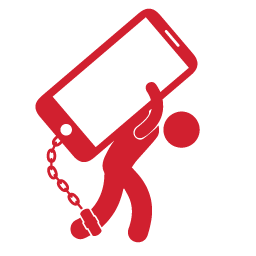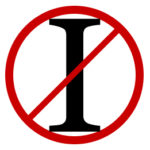
So…I feel a bit like a soulless drug pusher on this one, but hear me out, ok?
A growing issue is causing serious angst in today’s society: people are addicted to their phones and they know it…and they don’t like it. There’s a movement afoot for these addicts to “resist the ding” and wean themselves from craving the need to keep checking their phone. And the psychological battle cry of “how to take back control” is a hot topic at business conferences, therapy sessions, family dinner tables, relationship counseling, and in mainstream media. If this is news to you, here are two useful articles on the subject from NPR and Psychology Today.
But it’s a marketer’s mission to cut through clutter and get attention. And so we ruthlessly hunt for standout ways to infiltrate their phones: emails, text messaging, location-based promotions, social media (organic and paid), social media direct messaging, and <insert shiny marketing-tool-du-jour here>.
We WANT to be the ding that gets their attention. We WANT them to stop what they’re doing and embrace our message.
But think of the psychology: more and more people are taking control of their own “ding dial,” fiercely curating which dings (if any) get their immediate attention, and – whoa – even turning off the dings completely in order to neutralize messages that masquerade as urgent.
Worse (for us)…in an effort to reduce the overwhelming daily assault of information through intrusive dings and silent accumulation, they are more discriminating in scrubbing their access points. This means YOU (soulless, message-pushing marketer) are being judged continuously, and you are always just one frivolous ding away from getting banished.
So here’s what you need to ask yourself, marketers: what makes you ding-worthy? And you can’t do this effectively by looking at a single message’s value (i.e. this post, this email). You need to respect your role in the relationship with people’s phones and your value in their overall information landscape. What earns you the right to continued access? How do your dings foster Pavlovian-level satisfaction?
I’ll tell you the answer: always-relevant content, and choosing frequency wisely. Quite simply…don’t waste their time (or mental bandwidth) and make every ding meaningful.
Is this harder for you? Yep. Does this mean you have to care more about THEIR needs than YOUR sales goals? Yep. Is this annoying because now you have to think more, and sometimes resist sending messages you REALLY REALLY want to send? Yep.
But here’s the alternative: would you rather be banished? Because that’s what’s at stake now more than ever.
Marketing was never effective when it was too frequent or too frivolous. Desensitization and annoyance have always been at risk. But back in the day, those risks just wasted your money and time. People may have gotten annoyed, but they hadn’t yet – en masse – felt empowered to do anything about it.
But these days, technological assault has made people feel like victims and addicts, so when you annoy them, they not only feel empowered to banish you…they do it with a sense of righteous justice. Kicking you out of their phone grants them a joyous feeling of liberation.
And so yay for you, marketer! You created a positive encounter with your target. The downside is that it came from them slamming the door in your face…and locking it.
So what’s the moral of this story? Don’t ignore this growing social phenomenon, and adapt your approach accordingly.
In short: Please ding responsibly.
 get travel marketing tips
get travel marketing tips 





